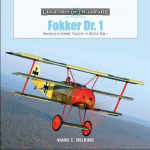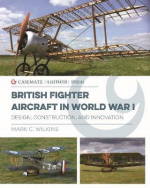
- Agriculture
- Architecture & Design
- Arts & Photography
- Biography
- Business
- Calendars and Diaries
- Childrens (All)
- Childrens (Illustrated)
- Childrens (Picture flats)
- Childrens (Te Reo)
- Classics
- Cooking, Food & Drink
- Craft & Hobbies
- Design (Art / Graphics)
- Design (Interiors)
- Education
- Fashion
- Fiction & Literature
- Fiction - Young Adult
- Gift Ideas
- Health & Wellbeing
- History
- Home & Garden
- Humour & Gift
- Instead of a Card Poems
- Military
- Music
- New Zealand
- NZ (History)
- NZ (Landscapes)
- NZ (Pictorial)
- Poetry
- Reference
- Religion & Faith
- Science & Nature
- Sport & Recreation
- Stationery
- Taschen : 40th Anniversary Edition
- Taschen : BA Basic Art
- Taschen : BU Bibliotheca Universalis
- Te Reo Māori
- Transport
- Travel
Mark Wilkins (2)
|
Fokker Dr1
ISBN: 9780764359682 Author: Mark Wilkins Publisher: Schiffer Books This book presents the evolution and development of perhaps the most iconic German fighter of WWI--the Fokker Dr. 1 triplane or "Dreidecker." The Dr. 1 was born... This book presents the evolution and development of perhaps the most iconic German fighter of WWI--the Fokker Dr. 1 triplane or "Dreidecker." The Dr. 1 was born from experiments in cantilever monoplanes and the excellent combat record of the Sopwith triplane, which appeared at the western front at the end of 1916. Only 320 Fokker Dr.1s were built, yet their imprint on aviation history was and is far reaching and enduring--perhaps due to those who flew them. Baron Manfred von Richthofen and his brother Lothar, as well as Werner Voss, Ernst Udet, and many others, all flew the triplane, helping burnish their image in collective memory. This book highlights the design and construction of the legendary Dr. 1, as well as showcasing many flying replicas and where they can be found. Also included are selected museums from around the world where Dr. 1s can currently be seen. Bind: hardback Pages: 112 Dimensions: 228 x 228 mm Publication Date: 28-06-2020 |
$45.00 |
|
|
British Fighter Aircraft in WWI
ISBN: 9781612008813 Author: Mark Wilkins Publisher: Casemate World War I witnessed unprecedented growth and innovation in aircraft design, construction, and as the war progressed - mass production. Each country generated ... World War I witnessed unprecedented growth and innovation in aircraft design, construction, and as the war progressed - mass production. Each country generated its own innovations sometimes in surprising ways - Albatros Fokker, Pfalz, and Junkers in Germany and Nieuport, Spad, Sopwith and Bristol in France and Britain. This book focuses on the British approach to fighter design, construction, and mass production. Initially the French led the way in Allied fighter development with their Bleriot trainers then nimble Nieuport Scouts - culminating with the powerful, fast gun platforms as exemplified by the Spads. The Spads had a major drawback however, in that they were difficult and counter-intuitive to fix in the field. The British developed fighters in a very different way; Tommy Sopwith had a distinctive approach to fighter design that relied on lightly loaded wings and simple functional box-girder fuselages. His Camel was revolutionary as it combined all the weight well forward; enabling the Camel to turn very quickly - but also making it an unforgiving fighter for the inexperienced. The Royal Aircraft Factory's SE5a represented another leap forward with its comfortable cockpit, modern instrumentation, and inline engine - clearly influenced by both Spads and German aircraft. Each manufacturer and design team vied for the upper hand and deftly and quickly appropriated good ideas from other companies - be they friend or foe. Developments in tactics and deployment also influenced design - from the early reconnaissance planes, to turn fighters, finally planes that relied upon formation tactics, speed, and firepower. Advances were so great that the postwar industry seemed bland by comparison. Bind: hardback Pages: 92 Dimensions: 203 x 254 mm Publication Date: 15-04-2021 |
$75.00 |




